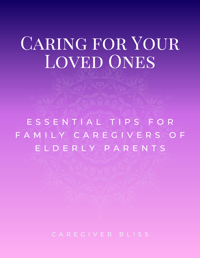As our loved ones age, the prospect of transitioning to assisted living often becomes a topic of discussion. While this change can be challenging for both seniors and their families, it is crucial to approach it with compassion, understanding, and careful planning.
In this article, we will explore the various aspects of transitioning to assisted living and discuss ways to provide support during this important phase of life.
Understanding the Need for Assisted Living
The decision to move a loved one into assisted living is often driven by a variety of factors, such as declining health, mobility issues, or the need for daily assistance. It is essential for family members to recognize when the time is right for this transition and to engage in open and honest communication with their elderly loved ones.
Starting the Conversation
Initiating a conversation about assisted living can be delicate, and it's important to approach it with sensitivity. Begin by expressing your concern for their well-being and acknowledging any challenges they may be facing. Focus on the positive aspects of assisted living, emphasizing the opportunities for socialization, safety, and improved quality of life.
Touring Assisted Living Facilities
Once the decision to explore assisted living has been made, involve your loved one in the process by visiting potential facilities together. Encourage them to ask questions and share their preferences. Assisted living facilities vary in terms of amenities, services, and atmosphere, so finding the right fit is crucial.
Addressing Emotional Concerns
Leaving the familiarity of home can be emotionally challenging for seniors. Address their concerns and fears with empathy. Reassure them that assisted living communities are designed to promote independence while providing the necessary support. Involving them in decisions about their new living space, decorating, and bringing personal items can help make the transition smoother.
Organizing the Move
The physical transition to assisted living involves downsizing and organizing belongings. Assist your loved one in deciding what to keep, donate, or give to family members. Hiring professional movers or enlisting the help of family and friends can make the process less overwhelming.
Building a Supportive Network
Encourage your loved one to participate in activities and events within the assisted living community. Social engagement is vital for their well-being, helping to combat loneliness and fostering a sense of belonging. Regular visits from family and friends are also crucial to maintaining emotional connections.
Monitoring and Adjusting
After the move, keep a close eye on how your loved one is adjusting to their new environment. Be open to feedback and address any concerns promptly. Assisted living facilities often have staff dedicated to resident’s well-being, so maintaining communication with the caregiving team is essential.
Conclusion
Transitioning to assisted living is a significant life change, but with thoughtful planning and emotional support, it can lead to a more fulfilling and secure chapter for elderly loved ones. By approaching the process with empathy, involving them in decision-making, and fostering a supportive environment, families can ensure a smoother and more positive transition to assisted living.
We hope this article has provided valuable insights into navigating the transition to assisted living with compassion and support. Share your experiences, tips, or questions in the comments below. Your stories may inspire and guide others going through a similar journey, creating a community of shared wisdom and understanding. Let's come together to support one another on this important path of caring for our elderly loved ones.
Free Guide:
Caring For Your Loved Ones
 Attention family caregivers! Are you struggling to provide the best care for your aging parents? Don't worry, we've got you covered.
Attention family caregivers! Are you struggling to provide the best care for your aging parents? Don't worry, we've got you covered.
Download our free guide, Caring for Your Loved Ones: 10 Essential Tips for Family Caregivers of Elderly Parents, and unlock the secrets to becoming an exceptional caregiver.
From adapting the home environment to promoting independence, this invaluable resource will transform your caregiving experience into a more rewarding journey. Don't wait—give your loved ones the care they deserve, and download your free copy today!

